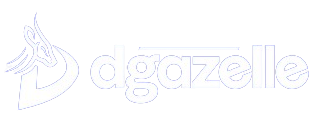What a company or any brand spends in creating or updating its website is known as website development costs. These costs can vary accordingly. A basic website can be put together for the cost of a small program and of writing the content. One may also spend a great deal of money on a website with custom-designed graphics and interactive features.
How much an organization spends on website development costs depends on the total business it can expect from a well-presented website. It will also affect the organization’s reputation and overall profit.
It is an adaptable tool that accomplishes a number of tasks, including promoting your business, increasing sales, and encouraging client interaction. Due to the perception of high expenses, investing in website design may appear intimidating for many organizations, particularly small and medium-sized firms (SMEs).
Still, a well-thought-out investment in your website can yield significant long-term gains. In this article, we’ll go over how to make the most out of your website by keeping a design that changes with your business, making strategic design decisions, and weighing the costs and benefits of your initial investment.
Understanding the Value of Website Design
The Role of First Impressions
It takes less than a second for users to form an opinion about your website. This split-second judgment is driven largely by visual elements. In the digital age, first impressions have a direct impact on user trust. 94% of users’ first impressions are design-related. If your website looks outdated or difficult to navigate, users may question the credibility of your brand, leading to higher bounce rates.
Design also taps into user psychology. The layout, color schemes, typography, and images all influence how visitors feel about your business. 38% of users will stop engaging with a website if the layout is unattractive. In contrast, well-crafted visuals can increase user retention by creating a sense of familiarity and professionalism. Incorporating psychology-driven design elements helps foster trust, resulting in higher engagement and potential conversions.
Website Design as a Business Asset
Many business owners underestimate the long-term value of quality website design, seeing it merely as an expense rather than an asset. In reality, a well-designed website can directly support business goals. For instance, companies with a user-centric website design can improve customer satisfaction, which in turn boosts revenue. As a business asset, your website contributes to customer acquisition, retention, and overall brand growth.
Several case studies highlight the correlation between design improvements and increased return on investment (ROI). Improved navigation and enhanced mobile responsiveness have shown a positive impact on sales metrics. By viewing website design as an ongoing business asset, you position your company to reap long-term rewards.
Key Elements of Effective Website Design
A well-designed website isn’t just about aesthetics; it’s about creating a user-friendly experience that encourages interaction. Key design principles include simplicity, consistency, and clarity. Users should find it easy to navigate, with intuitive menus and clear calls-to-action guiding their journey.
Additionally, loading speed affects both user experience and search engine optimization (SEO). Google’s algorithm factors page speed into rankings, and studies have shown that slow load times can result in a 7% drop in conversions. Tools like Google PageSpeed Insights can help you evaluate your website’s performance and identify areas for improvement.
Cost-Benefit Analysis of Website Design Investments
Initial Costs vs. Long-Term Savings
Upfront website design costs may include hiring professionals, purchasing software, and securing hosting services. However, these costs are offset by long-term savings. For example, investing in a well-optimized design reduces bounce rates, leading to more user engagement and sales. Furthermore, a thoughtfully designed site can lower customer service costs by offering intuitive navigation and self-service options for common queries.
When calculating the cost of website design, consider the lifespan of the design. A website that functions well and is easy to update will pay for itself over time through reduced maintenance expenses and increased traffic.
Measuring Return on Investment
To fully understand the benefits of your website investment, it’s essential to measure ROI. Metrics such as page views, bounce rates, conversion rates, and average session duration can help you assess performance. Tools like Google Analytics offer insights into how users interact with your site, while Hotjar enables heatmaps to visualize user behavior.
Calculating ROI from design improvements may also involve tracking revenue changes linked to design updates. For example, if your new design improves the user experience, leading to higher conversions, you can directly attribute that revenue boost to your website design efforts.
Budgeting for Future Enhancements
Website design is not a one-time investment. As your business grows, so should your website. Allocating a portion of your budget for periodic updates ensures your site remains functional and relevant. Technology upgrades, such as integrating new plugins or enhancing security features, are necessary to keep your site running smoothly.
Building flexibility into your design budget allows you to respond quickly to new trends or shifts in user behavior. Regular updates, along with a proactive approach to design improvements, keep your website ahead of the competition.
Strategic Design Decisions for Business Growth
Aligning Design with Brand Identity
Your website is an extension of your brand identity. Consistent branding across your website helps users recognize and trust your business. Elements such as logos, color schemes, and typography should align with your overall brand strategy.
Moreover, design choices can communicate company values. For instance, a business that prioritizes sustainability might use earthy tones and eco-friendly imagery to convey its commitment to the environment. Thoughtful design ensures your website acts as an ambassador for your brand.
User-Centric Design Approaches
A user-centric design approach focuses on meeting the needs and preferences of your target audience. Understanding who your users are and what they expect from your website is key to creating a meaningful experience. Conducting user research, utilizing usability testing, and implementing an iterative design process can help identify areas for improvement and guide design decisions.
The process of gathering feedback and refining design elements ensures that your website evolves alongside your users’ expectations. This cycle of testing and iteration results in a site that continually meets user needs, driving engagement and growth.
Integrating Marketing and Design Strategies
Design and marketing go hand in hand. A website’s design influences user behavior, which in turn affects conversion rates. Creating a seamless user journey, from the initial point of contact to the final conversion, requires collaboration between designers and marketers.
Incorporating visual elements that support your marketing strategy, such as clear calls-to-action and lead capture forms, can enhance your site’s effectiveness. Consider the role of design in guiding users through the conversion funnel, ensuring that each step is intuitive and aligned with your goals.
Choosing the Right Design Resources
In-House vs. Outsourcing Design Work
When deciding whether to hire an in-house design team or outsource, consider the scale and complexity of your website needs. In-house teams provide better collaboration and quicker updates, but outsourcing to a design agency or freelancer offers access to specialized skills. Each option has its pros and cons, and the right choice depends on your business’s specific needs.
Finding Qualified Design Professionals
Whether you’re hiring a freelancer or a design agency, evaluating portfolios and previous work is essential. Look for designers who have experience in your industry and understand the specific needs of your target audience. Ongoing training and professional development are also critical factors in choosing the right design partner.
Sustaining Long-Term Benefits from Your Design Investment
Regular Maintenance and Updates
Websites require continuous maintenance to ensure they remain functional and relevant. Schedule regular audits to identify areas for improvement, whether it’s updating content, enhancing security, or optimizing for new devices. Regular updates keep your website fresh and aligned with your business objectives.
As technology evolves, so do user expectations. Staying informed about design trends and industry shifts helps you anticipate future needs and keep your website competitive. Engaging with your audience for feedback also provides valuable insights into how your website can better serve its users.
Building a Strong Online Community
Your website can play a pivotal role in fostering an engaged online community. Encourage interaction through features like forums, blogs, or social media integration. By creating spaces where users can share experiences and offer feedback, you strengthen customer relationships and gain valuable insights for future design improvements.
Conclusion
Investing in strategic website design delivers long-term benefits by aligning user experience with business goals. From first impressions to consistent branding and ROI measurement, a well-designed site is more than just a digital asset—it’s a core component of business growth. Through careful planning, regular updates, and an adaptive mindset, your website will continue to serve as a valuable tool for achieving success in today’s digital world.
GET IN TOUCH
Don’t wait to make your website work harder for you. Contact us today to explore how a strategic design approach can help boost your business growth, enhance user experience, and increase ROI. Let’s build a website that reflects your brand and drives long-term success!






